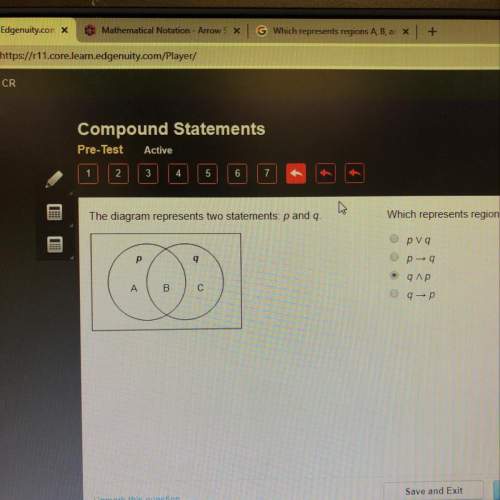
Mathematics, 05.09.2020 07:01 siriuskitwilson9408
Assume that round widgets from a manufacturing process have diameters that are normally distributed with mean 135.75 centimeters and standard deviation 1.85 centimeters. The chances that a randomly selected widget has diameter between 129 centimeters and 143 centimeters is closest to which of the following?a. 99,999 out of 100,000.
b. 99 out of 100.
c. 999 out of 1,000.
d. 9,999 out of 10,000.

Answers: 2


Other questions on the subject: Mathematics

Mathematics, 21.06.2019 17:30, jessied2000
What is not true about kl and mn? what is mn? (show your work)
Answers: 1

Mathematics, 21.06.2019 18:30, Lakenwilliams1250
Select 2 statements that are true about the equation y+6=-10(x-3).1) the slope of the line is -102) the slope of the line is 33) one point on the line is (3,6)4) one point on the line is (3,-6)
Answers: 1

Mathematics, 21.06.2019 23:00, kj44
Each of the following data sets has a mean of x = 10. (i) 8 9 10 11 12 (ii) 7 9 10 11 13 (iii) 7 8 10 12 13 (a) without doing any computations, order the data sets according to increasing value of standard deviations. (i), (iii), (ii) (ii), (i), (iii) (iii), (i), (ii) (iii), (ii), (i) (i), (ii), (iii) (ii), (iii), (i) (b) why do you expect the difference in standard deviations between data sets (i) and (ii) to be greater than the difference in standard deviations between data sets (ii) and (iii)? hint: consider how much the data in the respective sets differ from the mean. the data change between data sets (i) and (ii) increased the squared difference îł(x - x)2 by more than data sets (ii) and (iii). the data change between data sets (ii) and (iii) increased the squared difference îł(x - x)2 by more than data sets (i) and (ii). the data change between data sets (i) and (ii) decreased the squared difference îł(x - x)2 by more than data sets (ii) and (iii). none of the above
Answers: 2

Mathematics, 21.06.2019 23:10, alemorachis49
You just purchased two coins at a price of $670 each. because one of the coins is more collectible, you believe that its value will increase at a rate of 7.1 percent per year, while you believe the second coin will only increase at 6.5 percent per year. if you are correct, how much more will the first coin be worth in 15 years?
Answers: 2
You know the right answer?
Assume that round widgets from a manufacturing process have diameters that are normally distributed...
Questions in other subjects:

English, 02.08.2021 14:00

Health, 02.08.2021 14:00


Physics, 02.08.2021 14:00

History, 02.08.2021 14:00

Chemistry, 02.08.2021 14:00


Computers and Technology, 02.08.2021 14:00





